Ultra High Flux Irradiation (UHFI) Lab
Ultra High Flux Irradiation (UHFI) laboratory is an extension of the IMPACT facility. UHFI contains various in- and ex-situ experimental facilities: uniquely designed and well-diagnosed facility for testing the performances of plasma facing materials (PFMs) in near ITER- like environment at laboratory scale . The only constraints which are missing are T (can be substituted with D) and neutron irradiation. The effects of neutrons (experimentally) can be performed using energetic self-ion irradiation as surrogate. Other facilities include low energy and high flux ion irradiations in extreme conditions, Pulsed Laser Deposition (PLD), RF sputter deposition, Thermal desorption spectroscopy (TDS), and optical-reflectivity measurements.
In-situ testing performances of PFMs in Nearly Ideal Nuclear Fusion environments at laboratory scale
- Simultaneous loading of Dual Ion Beam Irradiation, Transient Heat (0.30 - 1.5 GW m-2), and Steady-State Heat ( upto 4 MJ m -2)
- Simultaneous loading of Single Ion Beam Irradiation, Transient Heat (0.30 - 1.5 GW m-2), and Steady-State Heat ( upto 4 MJ m -2)
- Dual Ion Beam Irradiation, transient, and steady state heat loading
- Transient and steady state heat loading in ELMs Condition
- Eroded mass measurement via. QCM (quartz crystal microbalance) and witness plate
- Custom designed ion beam irradiation experiments (if required)
Major Component:
- Custom designed cylindrical UHV chamber [view ports: eight 6 inch and eight 2 and three quarter inch (horizontal orientation), eight 2 and three quarter (vertically shifted horizontal plane), and one 4 and half (45 degree from vertical); all the view ports are centered to the supercenter of the UHV chamber]
- Separate fast entry load lock in the top of the UHV chamber
- Two broad beam ion source guns
- GSI Lumonics Nd: YAG laser (1064 nm, 1 Hz, 1 ± 0.1 ms pulse width).
- Miyachi America Corp.; LW25A laser (1064 nm, 25 W power, 0.2-10 ms, 1-30 Hz, ~ 3 mm beam dia. Flat-top spatially and temporally and beam shape).
- Heat load during these transient events is expected in the range of 0.2 - 2.0 MJ m−2 ( normal ITER tokamak conditions ), with a duration of 0.1 - 1 ms
- K type thermocouple and highly sensitive Pyrometer @ two color sensor
- Fast-gated ICCD camera for recording the wavelength dispersed signal. Imaging laser ablation plumes is accomplished using an ICCD
- QCM (quartz crystal microbalance) for ablated mass measurement
Single and dual ion beam irradiation in extreme conditions
- Broad-beam, low-energy, high-flux ion source gun [both, in horizontally and vertical orientations]
- X, Y, and Z moment of sample and direct mounting of sample on heater
- Temperature measurement using K-type thermocouple and highly sensitive Pyrometer
- Thermal-feedback mechanism in sample heater for correcting simultaneously the ion-induced heating of samples during experiments.
Thermal Desorption Spectroscopy (TDS)
- Ramping of surface temperature and simultaneous measurement of the intensity of the desorbed particles via. residual gas analyzer (RGA
- PID-controlled sample heater to achieve steady and constant temperature ramping rates. Heaters utilize a combination of resistive and electron beam heating
- Maximum usable temperature ~1100 K
- Capability to detect molecules up to 100 amu with a mass resolution of ~0.5 amu.
- High-resolution quadrupole mass spectrometer (for separating D (2.014 amu), D2(4.028 amu), and He (4.002 amu)) [planned]
Pulsed Laser Deposition (PLD) Epitaxial Ultra-thin Film & Multilayers
- "Q-Smart 450" ns laser (1064 nm (450 mJ), 532 nm (220 mJ), 355 nm (130 mJ); 10Hz, 5 ns)
- 2-inch diameter target with precise controlled rotation capability
- 2-inch programmable substrate heater (compatible with O2 up to 1 atmosphere) where substrate can be mounted directly. Heater is fully programable & mounted on XYZ movable manipulator
- Substrate temperature upto 1223K
- K type thermocouple and highly sensitive Pyrometer @ two color sensor
- Fast-gated ICCD camera for recording the wavelength dispersed signal. Imaging laser ablation plumes is accomplished using an ICCD
- QCM (quartz crystal microbalance) for ablated mass measurement
- LEED & RHEED (planned)
RF sputter and ion beam assisted deposition
- Two sputter deposition guns at 45º from substrate normal
- Additional sputter ion gun installed (in substrate normal direction)
- For achieving simultaneous sputtering from substrate. The specific design (convergence of all 3 ion source guns on a single point, supercenter) allows us to perform ion beam assisted deposition (IBAD).
For further details of UHFI systems please contact: jtripat@purdue.edu or hassanein@purdue.edu
|
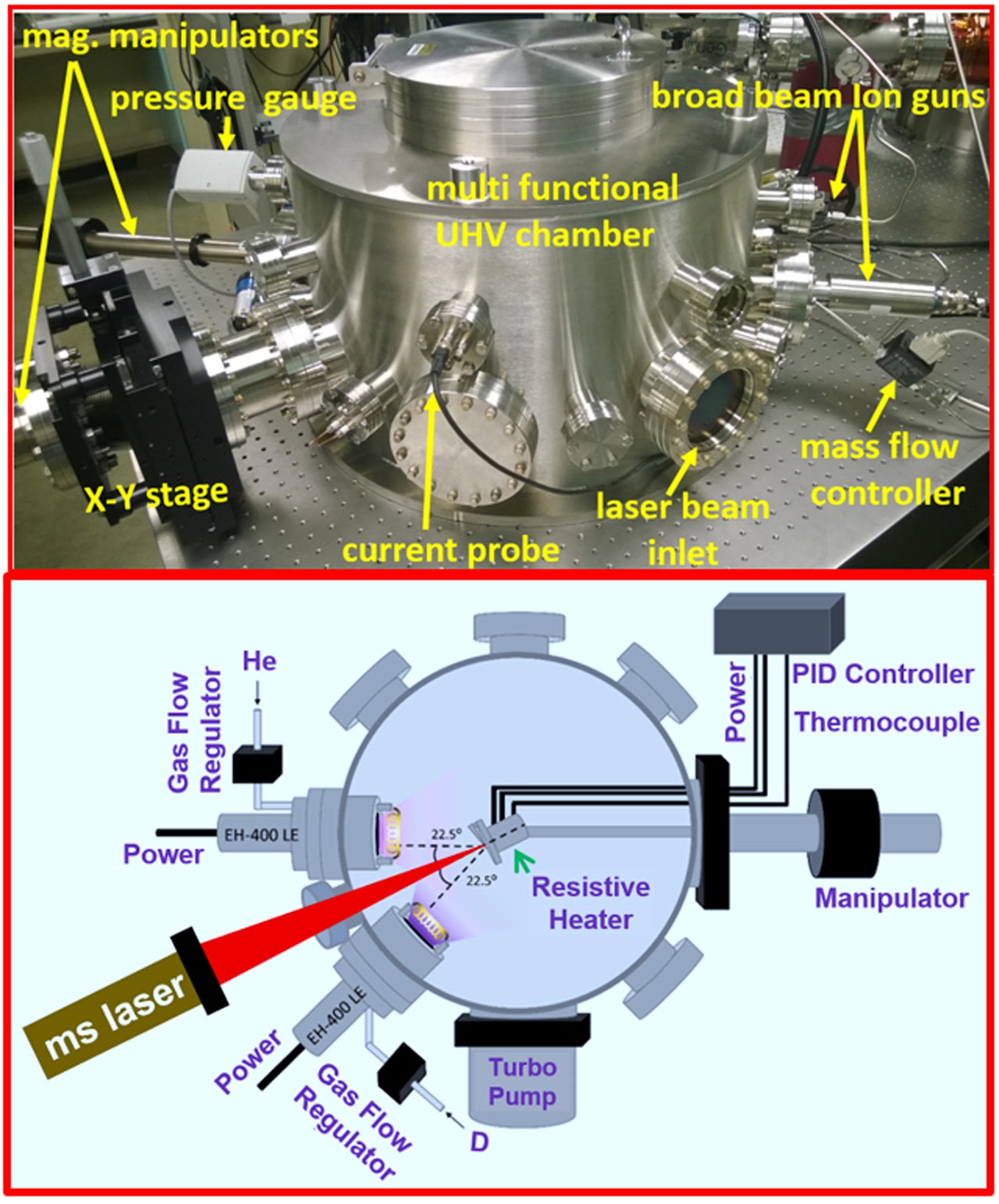
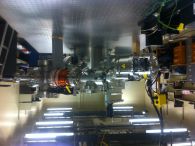
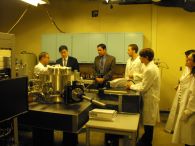
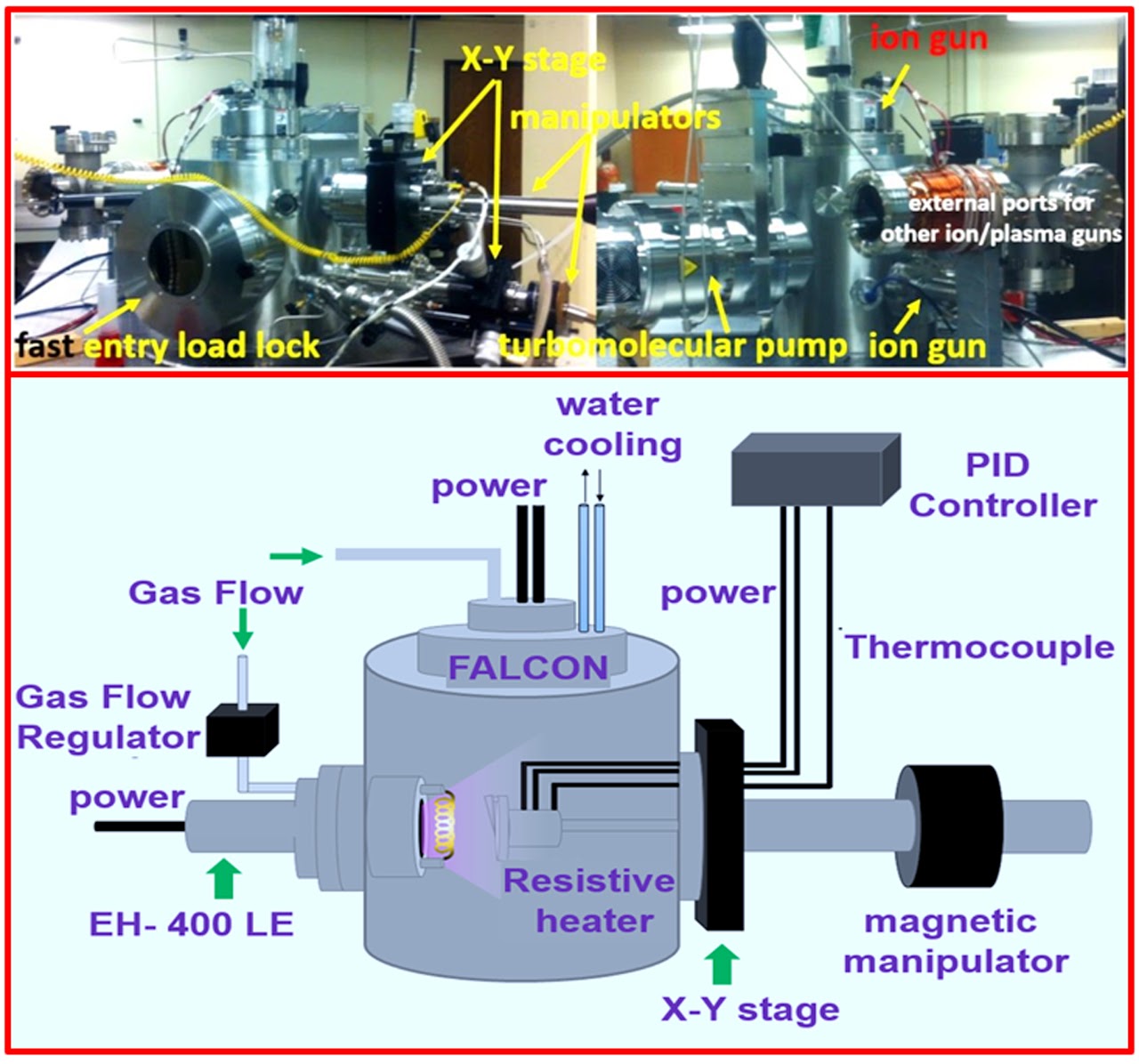
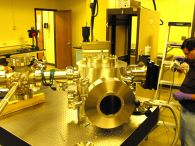
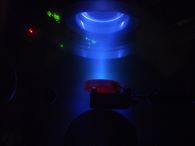
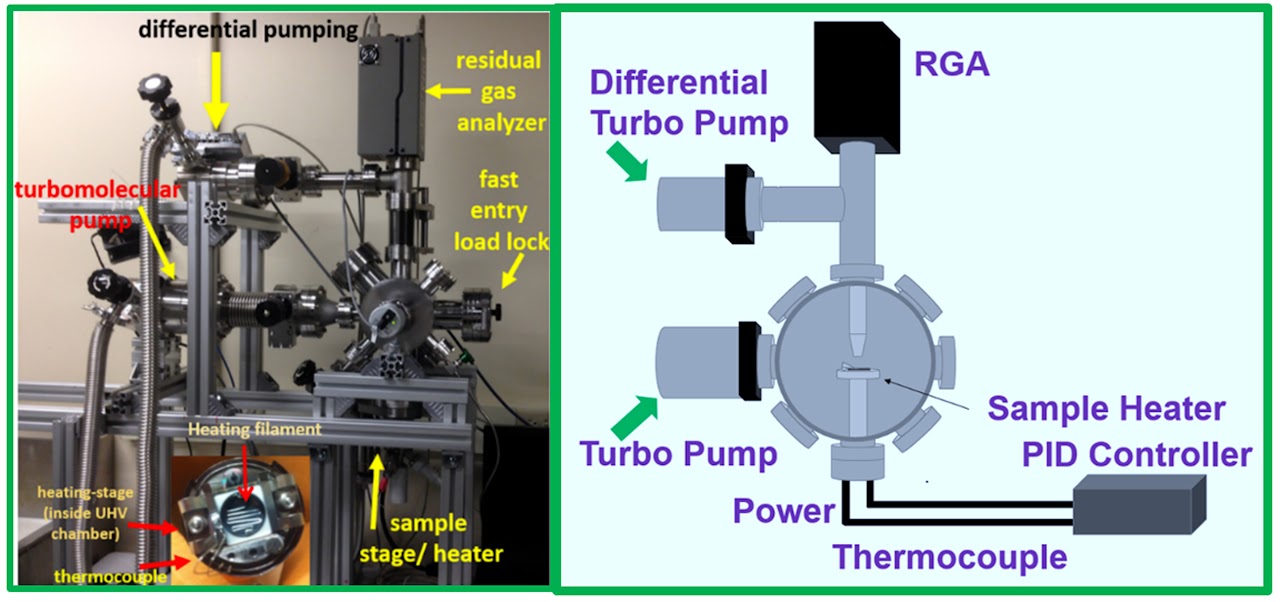
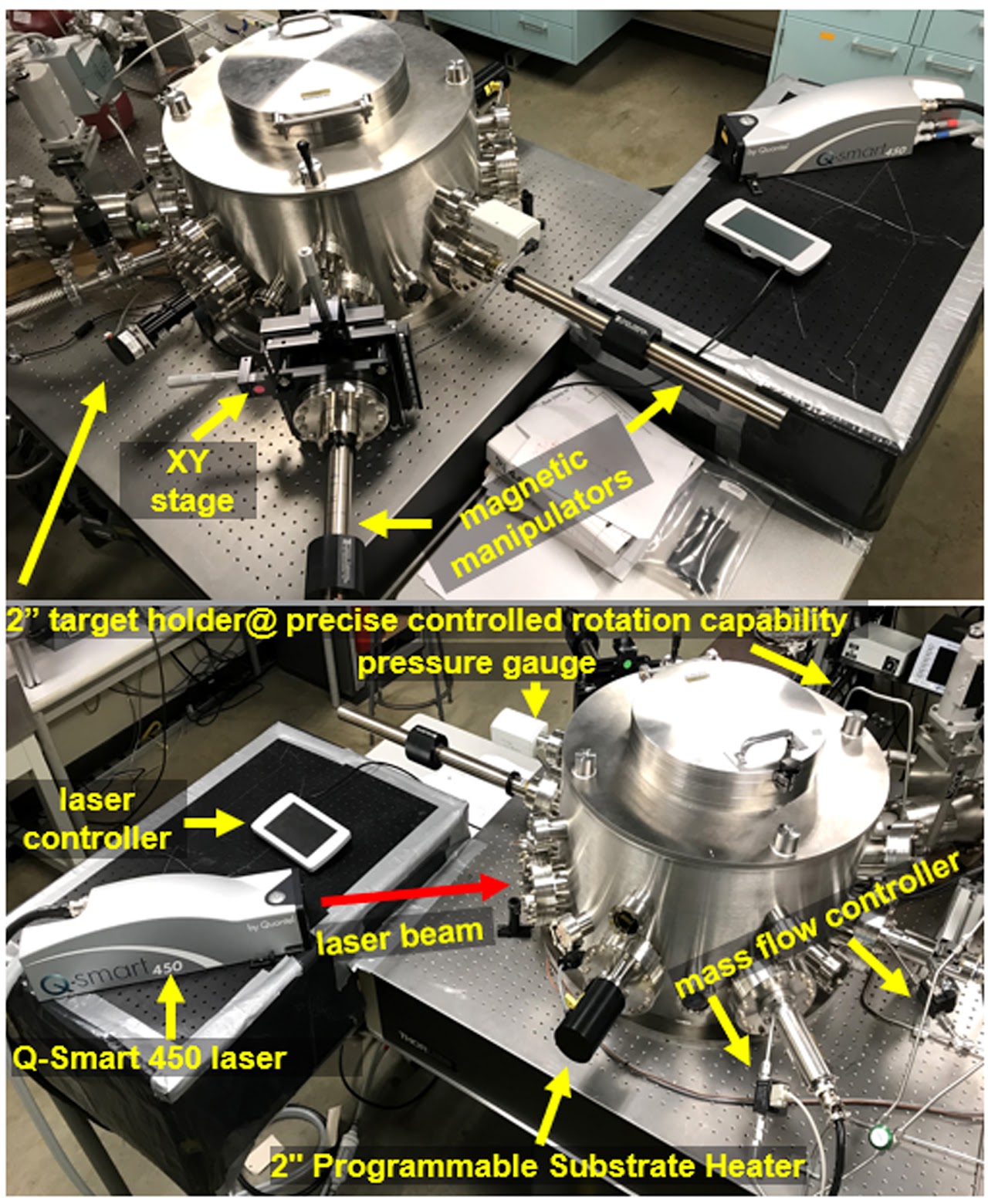
|



